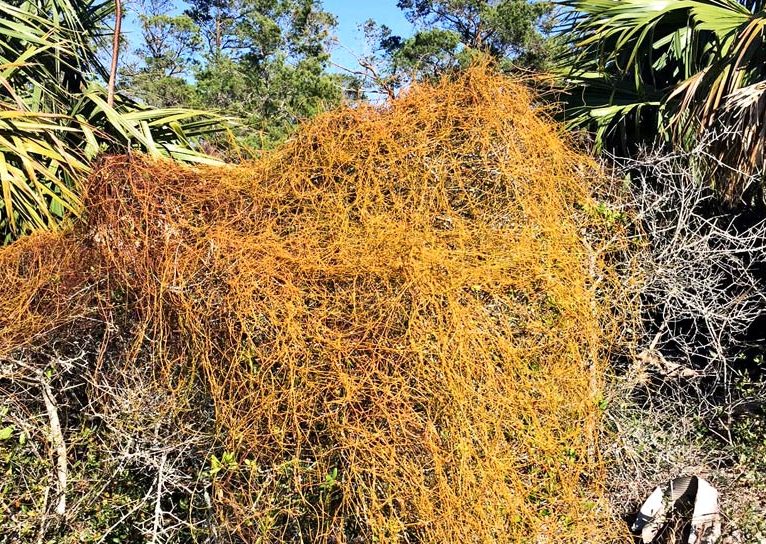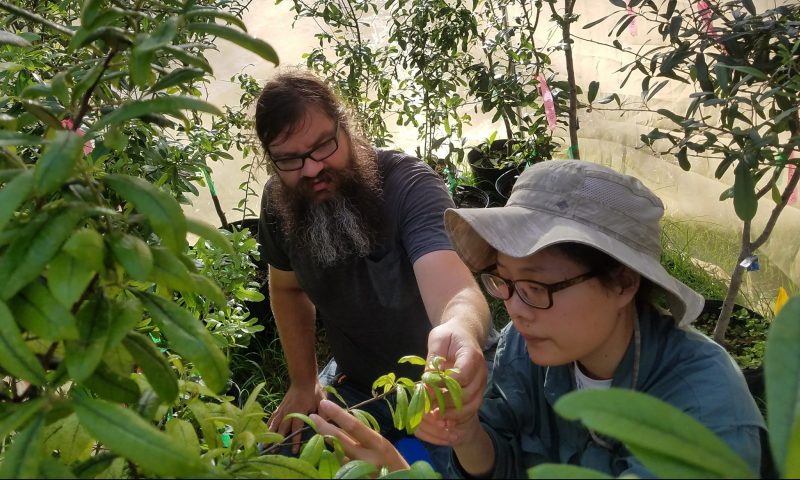If you’ve lived around live oak trees, you might have seen pea-sized, tumor-like growths on the undersides of the trees’ leaves. They’re called galls, and they’re made by a parasitic insect called a gall wasp, as a safe nursery for its larvae. Rice University scientists, working in the scrub habitat of South Florida, said on August 20, 2018, that – for the first time – they’ve discovered an interaction between these wasp parasites and a plant parasite called a love vine. They’ve learned that the vine attacks these galls, feeding off the wasp larvae inside, leaving behind dead and mummified wasps.
The paper describing this parasite-on-parasite interaction was published August 20, 2018, in the peer-reviewed journal Current Biology.


Scott Egan of Rice University is lead author of the new study. He’s spent 17 years studying gall-forming insects. He said he’d never seen a love vine (which typically gets its nourishment from other plants) feeding off a gall wasp:
I had never seen this. But the fact that no one, as far as we know, had ever documented this was incredible because biologists have studied each of these – the vines and the insects – for more than a century.
He said the find is exciting because it shows a new aspect of nature that hadn’t previously been noticed and could offer clues about ways to control agricultural pests and perhaps even fight cancer.

Egan explained:
Galls are like tumors in many ways. The wasps induce them to grow at the site where they lay their eggs, but the galls are part of the tree. The cells there have the same DNA as any other cell in the tree. They’ve just been reprogrammed to grow and behave in a way that is ultimately harmful to the tree.
If we can find out how the vines identify the galls, how they zero in on them, it could potentially provide new clues for targeting and fighting cancer.

Bottom line: Rice University biologists are studying an interaction between two parasites, a plant called a love vine and an insect called a gall wasp. When these two interact, the result is mummified wasps.
Source: Botanical parasitism of an insect by a parasitic plant











